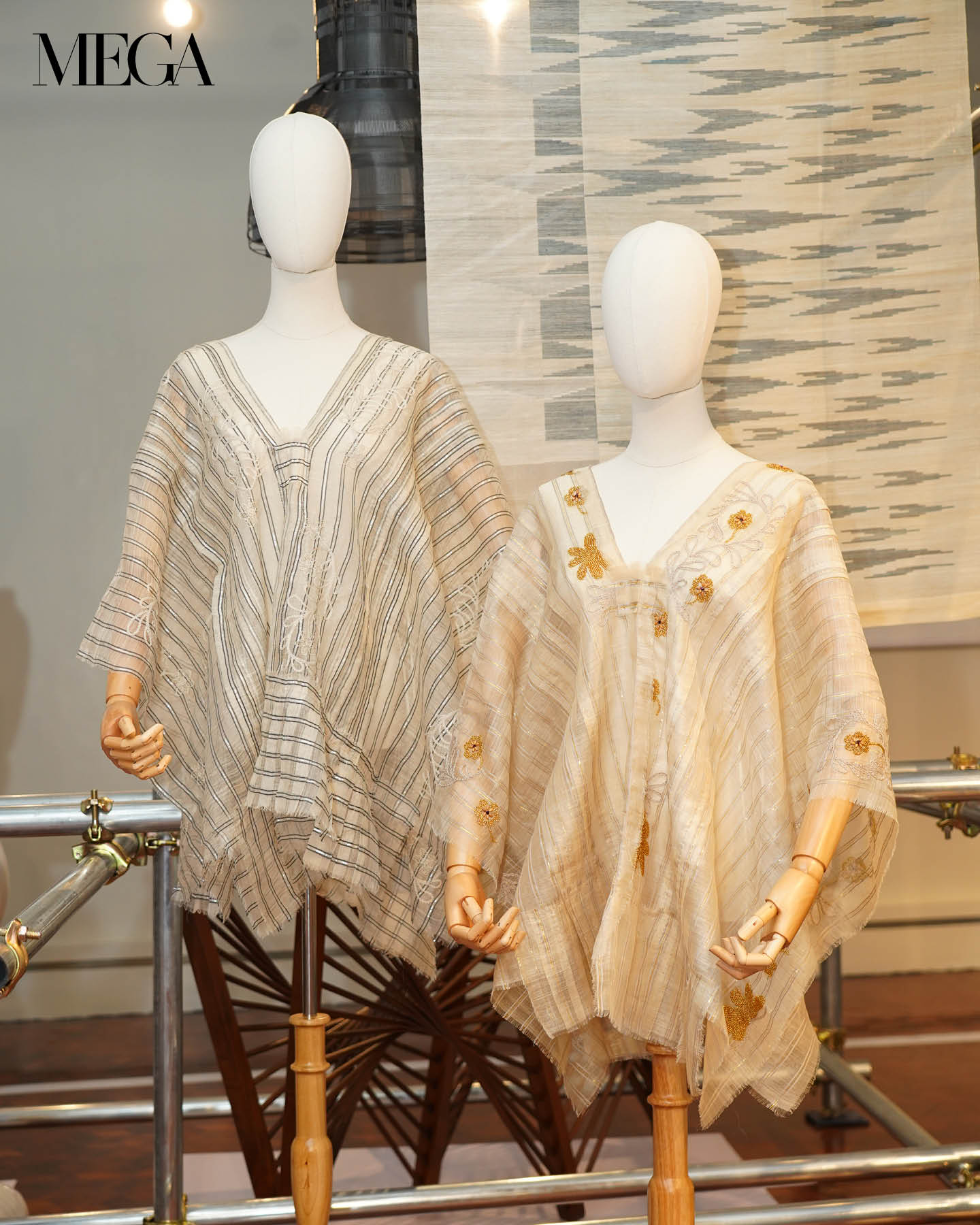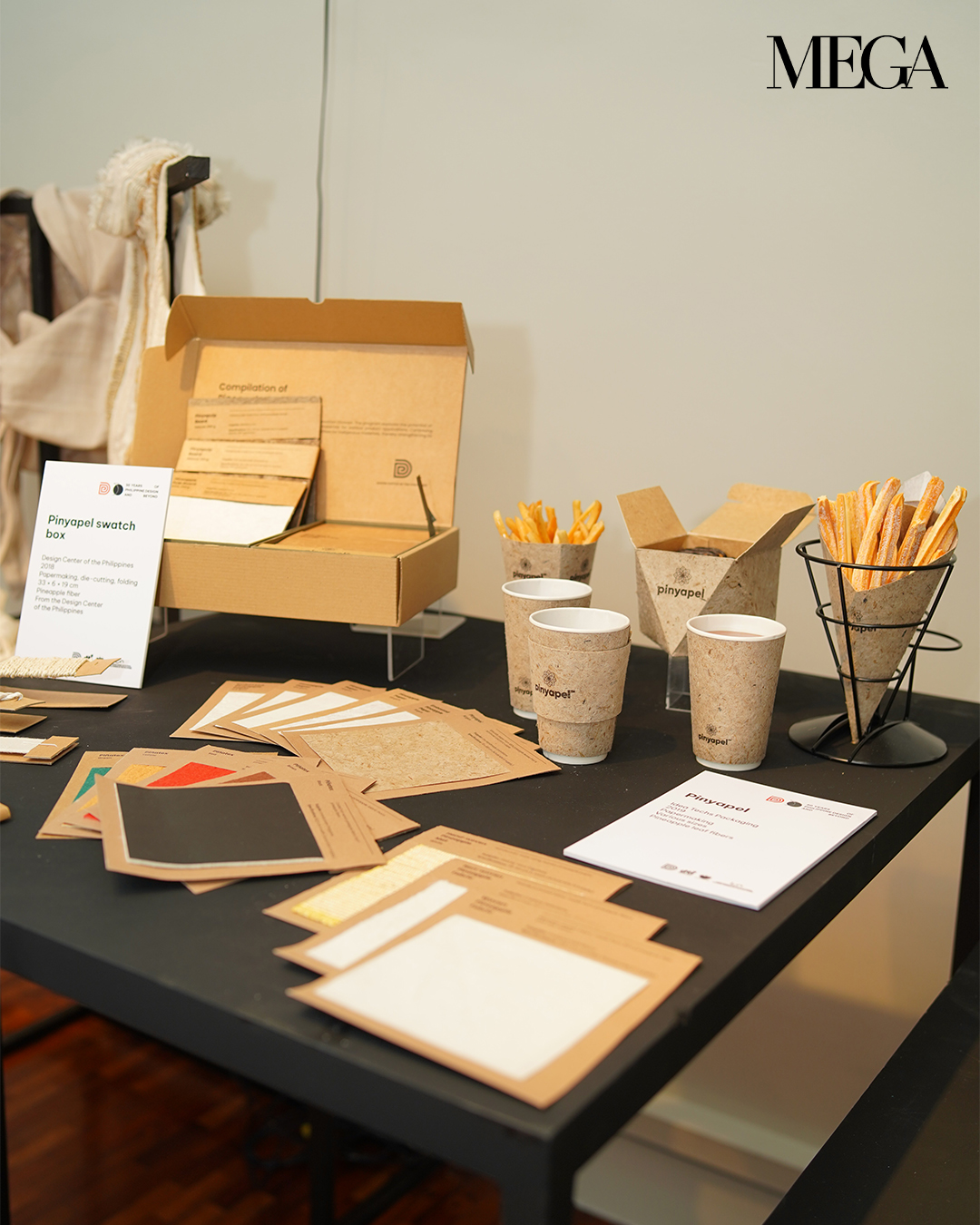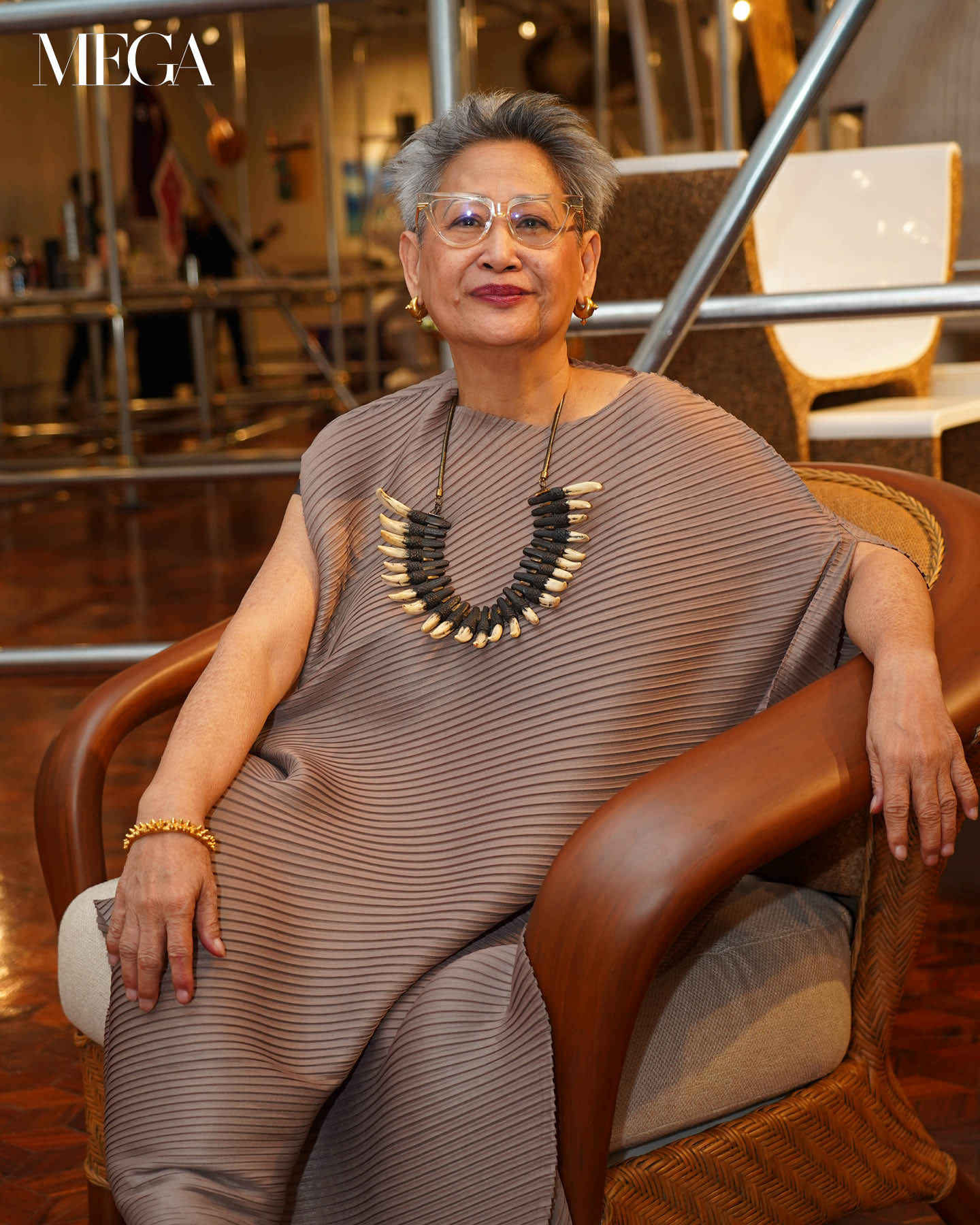In a conversation with MEGA, Curator Marian Pastor Roces dissects the current state and future of filipino design as we navigate the dire terrain
What is design? In the launch of the 50 Years of Philippine Design and Beyond exhibit at the National Museum of Fine Arts, Exhibit Curator Marian Pastor Roces dissected the expedition of Philippine design, rejecting the feeble label of the term “evolution.” As she delved into the core of the exhibition, the room transformed into a portal, transcending traditional curation’s confines. 50 years unfurled, revealing not a linear parade of milestones, but a labyrinth of interconnected timelines, where each twist and turn held the imprint of dynamic shifts in design over five tumultuous decades.
RELATED: Moments to Movements: The Reflections of Philippine Design

“The word ‘evolution’ is wrong,” she declares. “It’s a timeline.” She challenges the conventional perception of design as a linear progression marked by milestones. Roces illustrates a timeline, not an evolution—a networked trajectory threading through the unfolding developments. At every intersection, there carried the deliberate artistry of incisive moments, each a purposeful incision, steering the narrative of design in a new direction.
Roces expresses concern about the devastating difficulties ahead, testing the notion of empowering the next generation and highlighting the urgency of addressing imminent global issues. She framed the challenges that lay ahead not in the comfortable language of certainties, but in the stark reality of the world. “I’m not sure about the next generation,” she says somberly. “I’m sure about catastrophe. I’m more concerned about the catastrophic, and how we’re going to deal with it.” The future, she acknowledges, is a demanding terrain for the emerging generation of designers—a landscape laden with intricately designed problems waiting to be solved.

Roces thoughtfully sculpted a mental terrain where building a house is not just a construction project; it’s resilience against the fury of a category six typhoon. The act of town-building beats urban planning; it’s a design challenge that requires consideration of every element. The creation of clothing becomes a moral dilemma, entwined with ensuring it doesn’t become a pollutant to rivers. Even the choice of materials stretches practicality, delving into the profound questions of sustainability and resource management.

The curator poses a series of questions, each accounting for systemic awareness. “If you’re a fashion designer, sino nagtatahi ng damit mo? Sino ang [gumugupit] ng tela? Sino ang naglalaba? That’s a system.” Her inquiry formed circulatory processes—seamstresses, fabric cutters, launderers—all integral components of the system. “Responsibility means understanding entire systems,” she emphasizes, urging designers to transcend the surface aesthetics of their craft.
The discourse shifts towards a more encompassing view of design, placing responsibility and accountability at the forefront. Roces characterizes it as an interaction entwined with social justice. “It’s called ‘social justice.’ If you pay your workers nothing, and you profit, then that is simply abuse. That’s bad labor practice.” Each word carried the weight of ethical reflections like outlines imbuing design with layers of importance.

In the face of environmental crises, especially in the fashion industry, Roces acknowledges the intrinsic connection between sustainability and survival. She remains hopeful, spotlighting ongoing initiatives like circular economies and zero-waste within Filipino design. “That’s the whole show,” she affirms, referencing the exhibit. “We are ready to face it.” She emphasized the industry’s readiness to confront challenges head-on. The use of pinyapel, for example, is a locally sourced, locally manufactured, and 100% biodegradable material made from discarded pineapple leaves.

Is design social justice? Roces distills her wisdom into a potent statement: “Good design is social justice.” The comparison evolved from a flat surface to a tangible entity, where each design choice molded the structure of societal fairness. “You can design for injustice, you can make it happen.” Her warning lingered in the air, heavy as it may be, cautioning against the potential for design to be wielded as a tool of injustice. “You can make unjust systems, you can create it,” she says. “[But] hopefully not.”

In the heart of this collective endeavor, there’s an emotional resonance, an acknowledgment that the future isn’t just about creating beautiful things, but also about fostering a sustainable existence. It’s about nurturing a legacy that goes beyond trends and market demands, touching the very core of what it means to be human. Design isn’t just an afterthought, but a push for social justice. Can it be taught? If so, teach us. If not, then allow us to learn.
Photography KIM ANGELA SANTOS










